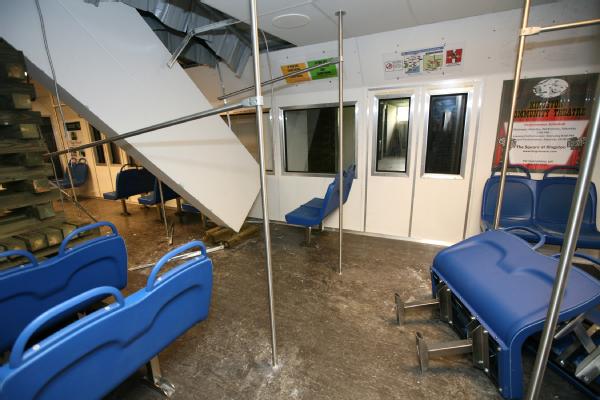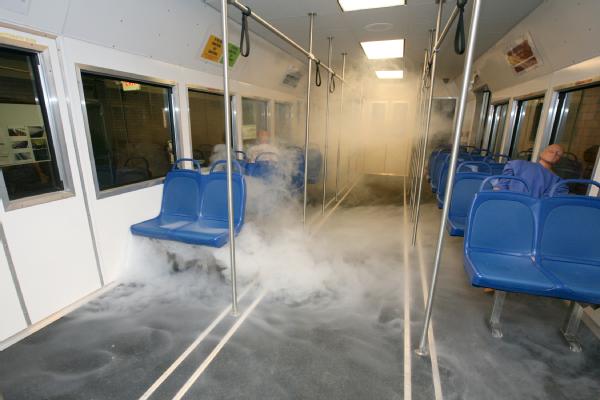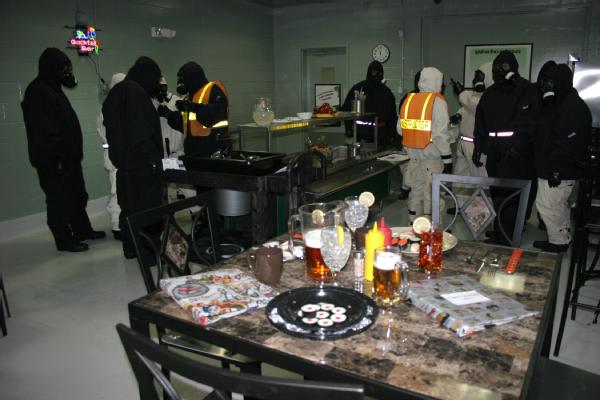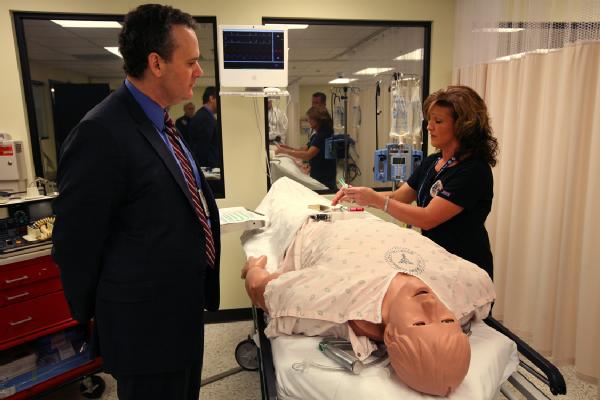A subway to nowhere teaches first response training
At FEMA’s Center for Domestic Preparedness, there is now a new venue where first responders can receive invaluable, hands-on training: a subway. The subway features four full size cars complete with lighting, smoke, seating, video capability, and even realistic commercial signage that is common in subways.

CAPTION: The CDP created a rail system that uses four cars. One car features a tunnel collapse scene, while another is damaged by an improvised explosive device. The subway system requires a response by emergency personnel to triage and extricate survivors, and mitigate the scene from hazardous chemicals or biological materials.
During training, emergency responders will have the opportunity to enter one car breached by falling concrete and threatened by simulated electrical hazards, and given the task of properly triaging survivors and transporting them to the appropriate medical personnel. They will also be required to find the source of any contamination that may be present and mitigate that threat so law enforcement, rescue, and emergency medical services can assist survivors.

CAPTION: A subway car displays results from a simulated tunnel collapse that will require the triage and extrication of survivors. The subway system gives training personnel the option to also include lighting malfunctions, smoke, and realistic sounds depicting the chaos expected in an actual event.

CAPTION: Smoke fills the room in a railcar during a simulated subway accident at the CDP. The CDP created a subway system, complete with full size railcars, lighting, seating, and even the commercial signage common on subways.
Here’s what Chuck Medley, CDP branch chief for training management, had to say:
We created the subway system based on the actual size of passenger transportation systems found in the United States. It provides us an opportunity to present hazards that responders may encounter when responding to a mass casualty incident associated with public transportation systems. In addition to the tunnel collapse and explosion, we can also simulate potential chemical and biological threats.
The CDP develops training based on potential threats, and the threat to our cities’ public transportation systems is real. This venue, while simulating a subway, also replicates the complexity of response to other public transportation modes including busses, trains, and even street cars. This training will increase the edge for emergency responders to successfully respond.
For first responders, practicing in simulated environments like those at the CDP can mean a faster, more efficient response to a real-world event. If you’re an emergency response provider, emergency manager, or healthcare professional, check out cdp.dhs.gov for training courses that can lead to on-the-ground results if an emergency should strike. If you’ve attended CDP training in the past, share your experience and leave a comment below.






